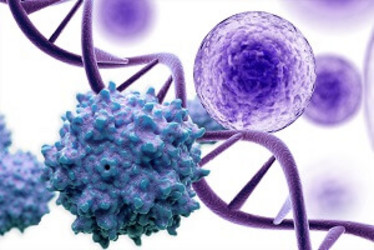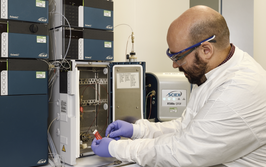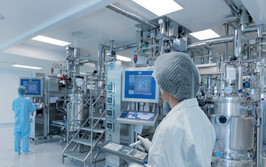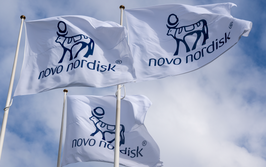
From Saving Patients to Saving the Planet
How can pharma help save the environment? We need to look at our processes – examining where we can apply green chemistry, reduce cleanroom sizes, and use less energy overall. If we’re truly serious about patient health, we need to protect our home.
Stephanie Vine | | 17 min read

A handful of people (and corporations) still deny climate change, but it is happening. A report from NOAA and NASA showed that 2010 to 2019 was the hottest decade since records began 140 years ago (1). Polar ice is melting. Extreme weather, such as hurricanes, floods and droughts, is becoming more frequent.
Let’s go back to 2010. When I used to ask medicine makers what they were doing to reduce their environmental footprint, I was often laughed at. Drug development is complicated enough, they would say. It’s essential for human health, they would argue. Most companies didn’t seem to feel compelled to consider the environmental impact of their operations.
Today, there is a growing realization that the planet is in danger, and – slowly – more companies are wanting to play their part. Company initiatives focused on the environment and sustainability are now commonplace in the pharma industry. And academic literature on the topic grows and grows.
Kristi Budzinski works for Roche Molecular Systems and is a member of the American Chemical Society Green Chemistry Institute Pharmaceutical Roundtable (Pharma Roundtable). The Pharma Roundtable was formed to encourage innovation in green chemistry and engineering – and to help companies incorporate more sustainable approaches into their processes. Budzinski was recently the lead author on a paper, conducted by the Pharma Roundtable, examining the life cycle assessment of single use technologies in biopharma manufacturing (2). Here, Budzinski discusses the paper, the Pharma Roundtable’s efforts to encourage the uptake of greener manufacturing, and her views on how the industry can improve sustainability in both small molecule and biopharmaceutical manufacturing.
What’s the story behind the Pharmaceutical Roundtable?
The Pharmaceutical Roundtable started in 2005. It began as a collaboration between the ACS Green Institute and the pharma industry about how to include green chemistry in their processes. Initially, there were only around five companies involved; back then, one of the main discussion points was how to collaborate in a competitive setting – because it is not easy to talk about green chemistry and small molecules without potentially infringing on intellectual property!
As the initial hurdles were overcome, the Roundtable has also focused on how to measure and assess the impact of green chemistry, resulting in the development of the process mass intensity metric, which has become the industry standard for how to measure process efficiency. It works by summing the mass of all of the inputs that go into synthesizing a product and then dividing this by the output (amount of API) – giving a numerical value.
The Roundtable has grown a lot over the last decade. Today, there are 23 full members (innovators and pharma companies), 16 associate members, and 3 affiliate members. Most of the growth has come in the last five years or so – and we are seeing burgeoning interest in the topic of environmental sustainability.

How have conversations and attitudes around green chemistry and sustainability changed over the years?
I’ve been participating in the Pharma Roundtable for ten years and the conversations have evolved. The Roundtable remains focused on measuring impact and developing tools to help move the needle in manufacturing, but it has also focused on early stage research and development. For example, the Roundtable has contributed significant funding to academic research activities on green chemistry topics and connecting this to industry. More journals are also recognizing the importance of green chemistry – and there have been an explosion in the launch of new journals focusing on green chemistry implementation.
In 2012, when I joined the Roundtable, we formed a large molecule focus group which was challenging as biopharma has quite different challenges from traditional pharma manufacturing, but also a testament to the ability of the roundtable to adapt. The members welcomed the biopharma perspective and helped build on the existing tools for small molecules to develop similar approaches for biopharma. These tools and techniques are now being expanded to “medium” molecules, such as peptides and oligonucleotides.
What aspect of small molecule manufacture produces the most waste?
Solvents. The Roundtable performed a benchmarking exercise (3) to examine where most of the waste in small molecule manufacture comes from – and the answer was solvents, which is convenient because this is a very non-competitive space! The Roundtable has focused on guiding chemists towards choosing solvents that are better from an environmental, health and safety perspective, while also encouraging solvent providers to create new solvents, by using renewable raw materials and creating solvents with better environmental profiles.
The biggest hurdle in finding replacement solvents is a technical one; finding replacements for chlorinated solvents like dicholormethane, or for dipolar aprotic solvents like DMF, NMP, THF, etc. is extraordinarily difficult. The combination of physical and molecular properties of these solvents, such as their boiling point, or their solvation of higher molecular weight molecules, etc., are key determinants of reaction and overall process efficiency. If a chemical company finds a potential technical replacement, it then needs to meet stringent environmental, safety, health, and sustainability requirements in addition to passing regulatory requirements for residual solvents in the final drug product or for meeting GMP requirements. While the pharma industry is a big user of solvents, it is not the biggest user of solvents, and the types of solvents that are used are not always high-volume commodity solvents, such as in other industries. This makes the cost to develop a new solvent, document its EHS/Sustainability bona fides, and meet drug manufacturing and regulatory requirements a daunting prospect.
There are also regulatory concerns with integrating a new solvent into GMP processes. Companies generally need a key reason and strong motivation to change an existing process. If it is a really inefficient process with a lot of waste for example, there may be cause to make improvements. But most companies would likely only use a new solvent for a new development – and it could take a while before a company hits on a commercially viable target that uses a particular solvent. And why should chemical companies make a new solvent that likely won’t be used for years?
Despite the challenges, some new solvents have come to market but maintaining adoption is difficult. Some people may try it, get interested, and want to buy – only to find out there’s a six month backlog… And then everybody forgets about it.
We also have to acknowledge that solvents aren’t “sexy.” Not all companies have the staff available to test new solvents, although larger companies may perform solvent screening in process development. Here, they may not only be looking at the reaction and process efficiency, but also looking to identify different polymorphs and protect IP.
To help ease the adoption of new solvents for the industry, we need to get creative. And that’s why it’s really important to get this kind of work into academic settings. A great project for an up-and-coming student could be to explore where new solvents could be used and to help make it easier for industry adoption. Some companies are using interns for this type of work. For example, Genentech hosted a summer intern to look at solvent application – and the work was published so that it could be shared more broadly (4). However, just because a student does this work for a company, there is usually no mechanism to facilitate acceptance of alternative solvents in an academic setting. Secondly, investigation of new solvents isn’t something of mainstream academic interest with the exception of ionic liquids and deep eutectic salts, both of which are non-starters in the Pharma industry.
Tell us about your recent paper on sustainability and bioprocessing…
Many of the same companies using green chemistry for small molecules also have a biopharmaceutical arm. Around one quarter of our Pharmaceutical Roundtable members also participate in our biopharma focus groups. Some of the tools and metrics we’ve developed for small molecules aren’t necessarily applicable in biopharma, but we can at least look at how they were created, adopted, and accepted – to help us apply similar approaches to biopharmaceuticals.
We developed a process mass intensity metric for biologics (4) and used this metric to benchmark bioprocess manufacturing across companies and bioreactor scales and the resulting number was quite large, mainly because biopharmaceuticals use a great deal of water (water accounts for around 90 percent of the intensity of the process). As a group, we then looked for opportunities to reduce this number, which included collecting and sharing engineering best practices and cleaning best practices (5). While we were investigating this area, the industry started to significantly ramp up the adoption of single-use technology. The conversation evolved from only looking at process efficiency to also looking at single-use technology implementation, which generates increased plastic waste. The Roundtable wanted to assess, scientifically, the implementation of single use technology to understand trade-offs that arise from the use of plastics and environmental hotspots. Thus, we partnered with a consultancy to perform a streamlined life-cycle assessment (LCA) of single use biopharmaceutical manufacture (6).
With process mass intensity, one considers all the process inputs but not the environmental impact of those inputs and their supply chain. It also does not account for energy consumed or the impact of any waste generated. This information becomes very important when you think about moving from traditional stainless steel vessels to single use; how else can you properly compare a stainless steel tank – and all the water required– to a plastic bag?
Having this study conducted through the Pharma Roundtable was great because it allowed us to look at the issue from an industry-wide perspective. We started with the standard platform for a monoclonal antibody production, and had the member companies agree on standard input values for the number of steps, chemicals, amount of time required, and amount of energy and water consumed, and so on.
What surprised you the most about the results of the LCA?
It was interesting to see how little the single-use lifecycle (production and disposal) mattered compared with the actual biopharmaceutical manufacturing process, which begs the question: How much of the burden still rests with pharma manufacturers, as opposed to single-use manufacturers? I think this was quite surprising.
With single use, you essentially outsource the supply chain – and I think there can be a tendency for the drug manufacturer to therefore think the responsibility for the environmental impact lies with the vendor. But given our findings, it turns out that the cards are very firmly in the hands of we pharma manufacturers to improve things!
Aside from water, what other aspects of biopharma manufacturing contribute to the environmental footprint? And how can the industry improve?
Besides the water used, energy consumption makes up the lion’s share of the environmental impact. Energy is required to purify the water used in the process and for cleaning, to heat and cool the manufacturing space, and to maintain the cleanroom specifications required for sterile processing. Single use technology removes the need for cleaning equipment – just one of the benefits that have resulted in its adoption – but it can also reduce the facility footprint needed. Single use technology allows for a fully closed process, which reduces the cleanroom requirements and, therefore, a facility’s energy consumption and carbon footprint.
Biopharma companies can also reduce their environmental footprint by switching to renewable energy for their manufacturing plants. Additionally, we need to collaborate with our suppliers to reduce the carbon footprint along the supply chain.
Going back to the issue of water, I think we also need to be ready to adopt new technology and innovation around water purification. After heating, ventilation and air conditioning, production of purified water is the biggest energy consumer.
What are your thoughts on the adoption of process intensification for biopharmaceuticals?
As the LCA sensitivity analysis showed, increasing the cell culture titer reduces the environmental impact. Process intensification efforts could contribute to reducing the environmental burden through increased output or higher efficiency in the unit operations.
However, there are challenges and regulatory hurdles. And we also need to ask whether companies are willing to move legacy products/processes to an intensified process, or if they would rather direct their time and money to new developments for the pipeline.
There is certainly a lot of interesting new technology being developed for intensified processing that spans both upstream and downstream operations. Understanding where and how to adopt these technologies will require time and effort especially in the current atmosphere given supply chain constraints.
It’s not that most pharma companies are necessarily against new technology; rather, adoption has to be a slow and steady process. Companies must ensure they adopt the solution that fits their process. And they need to consider the supply chain (COVID-19 has brought supply chain robustness into even sharper focus); what happens if you pick one system and then find the consumables you need can’t be sourced down the line? Do you have back up suppliers?
Nevertheless, I think that the biopharma industry is at the maturity level where companies are exploring how products can be made better. After all, as more biosimilars come to market, there are increasing levels of competition and the need for greater efficiency. In the small molecule world, companies that adopted green chemistry initiatives sooner saw a competitive advantage.
How does small molecule manufacture compare with bioprocessing in terms of energy usage?
Small molecules don’t have to be manufactured in a cleanroom, which contributes to a much lower energy usage. There are aspects of small molecule manufacturing that consume a lot of energy, such as high temperature reactions, distillation, etc but the biggest difference is that bioprocessing requires the cleanroom facility to be fully operational at all times.
In the green chemistry space, it all comes back to the route design. In theory, a chemist could design a route without distillation, refluxing, or a high temperature step. In bioprocessing, you can’t design out the cleanroom – although with single use, you can reduce the cleanroom space down to the absolute minimum size necessary. This requires a collaborative effort from facilities engineering, process development, and other functions.
What are your personal thoughts on the topic of sustainability in the industry?
I hope it’s clear I’m very passionate about it. I didn’t learn about green chemistry until grad school, but I was thrilled to know that it existed. I also didn’t see my career ending up in pharma, but when I got here it was amazing to see the commitment to sustainability – even at a time when sustainability wasn’t as big a topic as it is now. At Genentech, we have a focus on oncology drugs, and no one asks about the footprint of their oncology drug – patients just hope that it works. But that hasn’t stopped Genentech having an interest in sustainability. And part of my job has been to build sustainability into R&D and process development.
In the last few years, there has been an exciting change; more companies are trying to implement sustainability over the entire lifecycle of making a drug, with the notion that health is connected to environmental sustainability. If we’re really serious about healthy patients, we have to have a healthy planet.
The population is aging. We will all need more medication. And we are all becoming more aware of our impact on the environment. Patients are also thinking about the waste that comes with managing a chronic condition – but patients shouldn’t need to worry about that.
Pharma companies have always focused on getting a new medicine out of the door as quickly as possible to help patients, so sustainability has traditionally been an afterthought. Now, we are integrating sustainability into the process – it’s not perfect and we certainly are not slowing down our pipeline to get treatments to patients – but the mindset is there. And now it seems like all companies are thinking and talking about sustainability. We have the power of mass! The challenges are huge, but rolling that ball uphill is easier when you have more hands. I believe that – in time – we will be able to make a difference.
Roundtable Rewards
I’m proud to say that the Pharmaceutical Roundtable has worked on a variety of different projects and we’ve published a lot of resources (available at https://www.acsgcipr.org/). Tools developed by the Pharma Roundtable are being applied in major industry initiatives, such as the National Institute for Innovation in Manufacturing Biopharmaceuticals (NIMBL). NIMBL is pushing for process intensification in biopharma, which focuses on how to speed up adoption. As part of the project, NIMBL has also set out to achieve carbon-neutral bioprocessing by 2029. I was invited onto the sustainability team that is going to work on this – and I think it’s an admirable and bold goal.
Many companies have strong sustainability goals but very few tie them to manufacturing processes. It was inspiring to see NIMBL set its goal – now we just need to figure out how to get there! It’s a multi-company collaboration and, if they can get it right, many companies will be able to adopt the approach. With NIMBL leading the way, no single company is on the hook for investing the time and energy required for the development.
The project will look at mAbs, but we may also be able to think about how to apply the findings to vaccines and cell and gene therapies.
Green Deed Awards
The ACS Green Chemistry Institute Pharmaceutical Roundtable has two awards that recognize excellence in “chemistry and processes that provide compelling environmental, safety, and efficiency improvements within the pharmaceutical industry and its allied industrial partners.”
- The “CMO Excellence in Green Chemistry Award” recognizes “outstanding” green chemistry efforts from CMOs in areas such as synthetic route development for starting materials, intermediates, or APIs. This includes reaction conditions and chemical/manufacturing technologies. 2022 marks the first year this award has been run. The deadline for 2022 has already passed and the winner will be invited to give a presentation about their technology at the ACS Green Chemistry Institute’s 2022 Green Chemistry & Engineering Conference.
- The “Peter J. Dunn Award for Green Chemistry & Engineering Impact in the Pharmaceutical Industry” was established in 2016 to recognize the research, development and execution of green chemistry in the pharmaceutical industry. Pfizer’s Peter J. Dunn was the first winner – and the award was later renamed in his honor. Dunn was a founding member of the Pharmaceutical Roundtable. He received the reward after retiring from Pfizer in recognition of his dedication to green chemistry and engineering.
Again, nominations for 2022 are closed and the award will be presented at the Green Chemistry & Engineering Conference.
Past recipients of the Peter J. Dunn Award:
2021: Stephen Dalby, François Lévesque, Cecilia Bottecchia, and Jonathan McMullen (Merck), “Greener Manufacturing of Belzutifan (MK-6482) Featuring a Photo-Flow Bromination.”
2020: Dan Bailey (Takeda Pharmaceuticals), “Beyond Organic Solvents: Synthesis of a 5-HT4 Receptor Agonist in Water.”
2019: B. Frank Gupton and Floyd D. Gottwald Jr. (Virginia Commonwealth University), “Increasing Access to Global Health Care through Process Intensification.”
2017: Bruce Lipshutz (University of California, Santa Barbara) and Sachin Handa (University of Louisville), “Development of Newly Engineered Catalysts for Sustainable Surfactant Chemistry in Water.”
For more information visit https://www.acsgcipr.org/awards/
Since 2007, the Pharmaceutical Roundtable has awarded more than $3 million in research grants to advance green chemistry solutions. In 2021, recipients included Duncan Browne (University College London) for solvent minimization in flow chemistry, Malgorzata Chwatko (University of Kentucky) for greener peptide and peptide conjugate synthesis, Hans Renata (Scripps Research) for increasing the utility of enzymes in pharma, and Jennifer Schomaker (University of Wisconsin Madison) for technology-enabled late-stage functionalization of pharmaceuticals.
Credit : Collage collated from Unsplash.com
Leverage Proven Technology to Speed Path to FIH

GPEx® Lightning is a fast, flexible way to shorten the path to production of phase 1 material. During this talk, we share the latest data leveraging GPEx® Lightning to generate highly stable, highly productive cell pools.
- NOAA, “2019 was 2nd-hottest year on record for Earth say NOAA, NASA,” (2020). Available at https://bit.ly/3tVYHq0.
- K Budzinski et al., New Biotechnology 68, 28-36 (2022). DOI: 10.1016/j.nbt.2022.01.002
- C Jimenez-Gonzalez et al., Org. Process Res. Dev. 15, 912-917 (2011). DOI: 10.1021/op200097d
- FM Chardon et al, Green Chemistry 16, 4102-4105 (2014). DOI: 10.1039/C4GC00884G
- K Budzinski et al., New Biotechnology 49, 37-42 (2019). DOI: 10.1016/j.nbt.2018.07.005
- K Budzinski et al., BioProcess Int (2015). Available at https://bit.ly/3NaU5UG

Making great scientific magazines isn’t just about delivering knowledge and high quality content; it’s also about packaging these in the right words to ensure that someone is truly inspired by a topic. My passion is ensuring that our authors’ expertise is presented as a seamless and enjoyable reading experience, whether in print, in digital or on social media. I’ve spent fourteen years writing and editing features for scientific and manufacturing publications, and in making this content engaging and accessible without sacrificing its scientific integrity. There is nothing better than a magazine with great content that feels great to read.



















